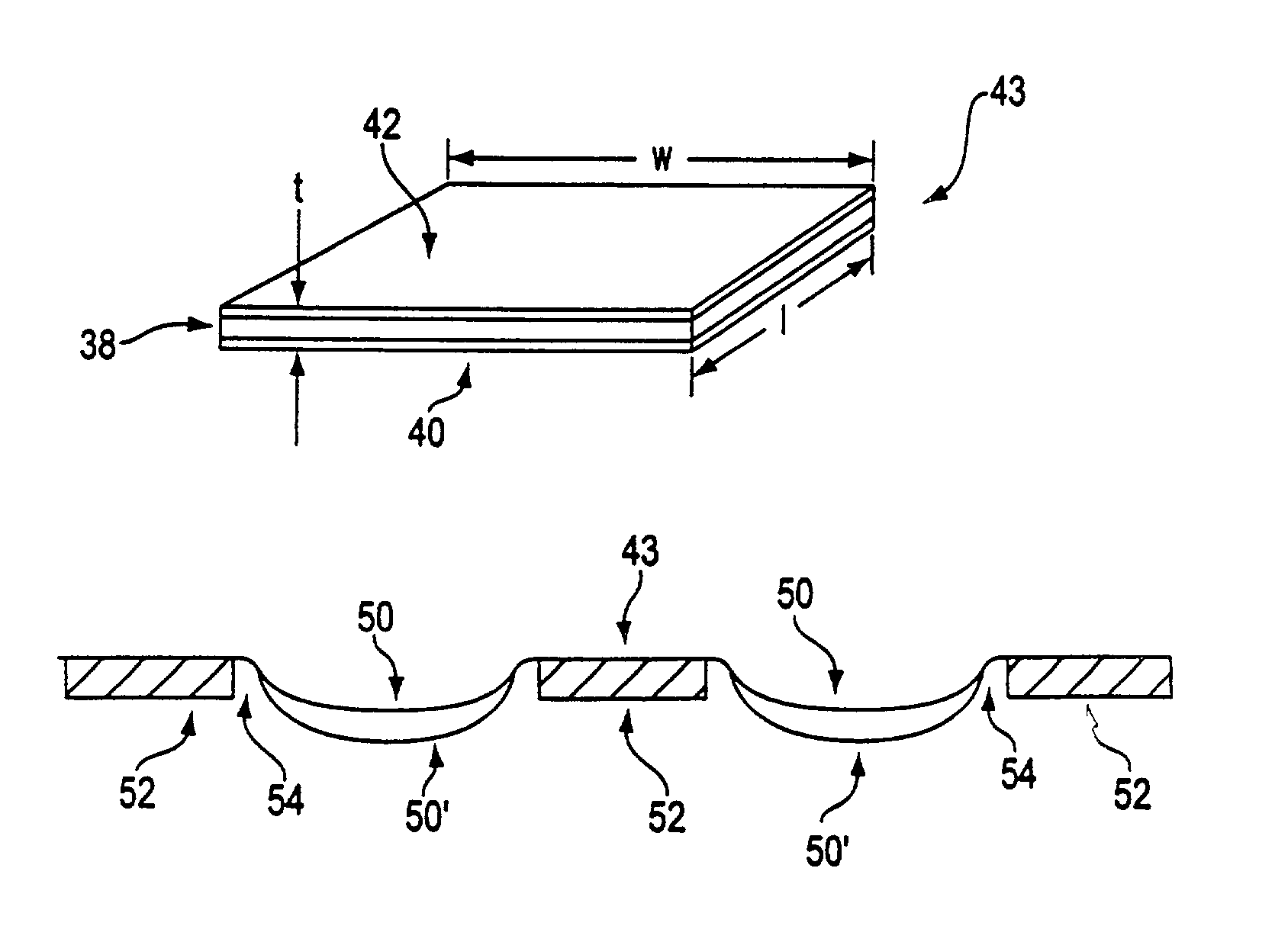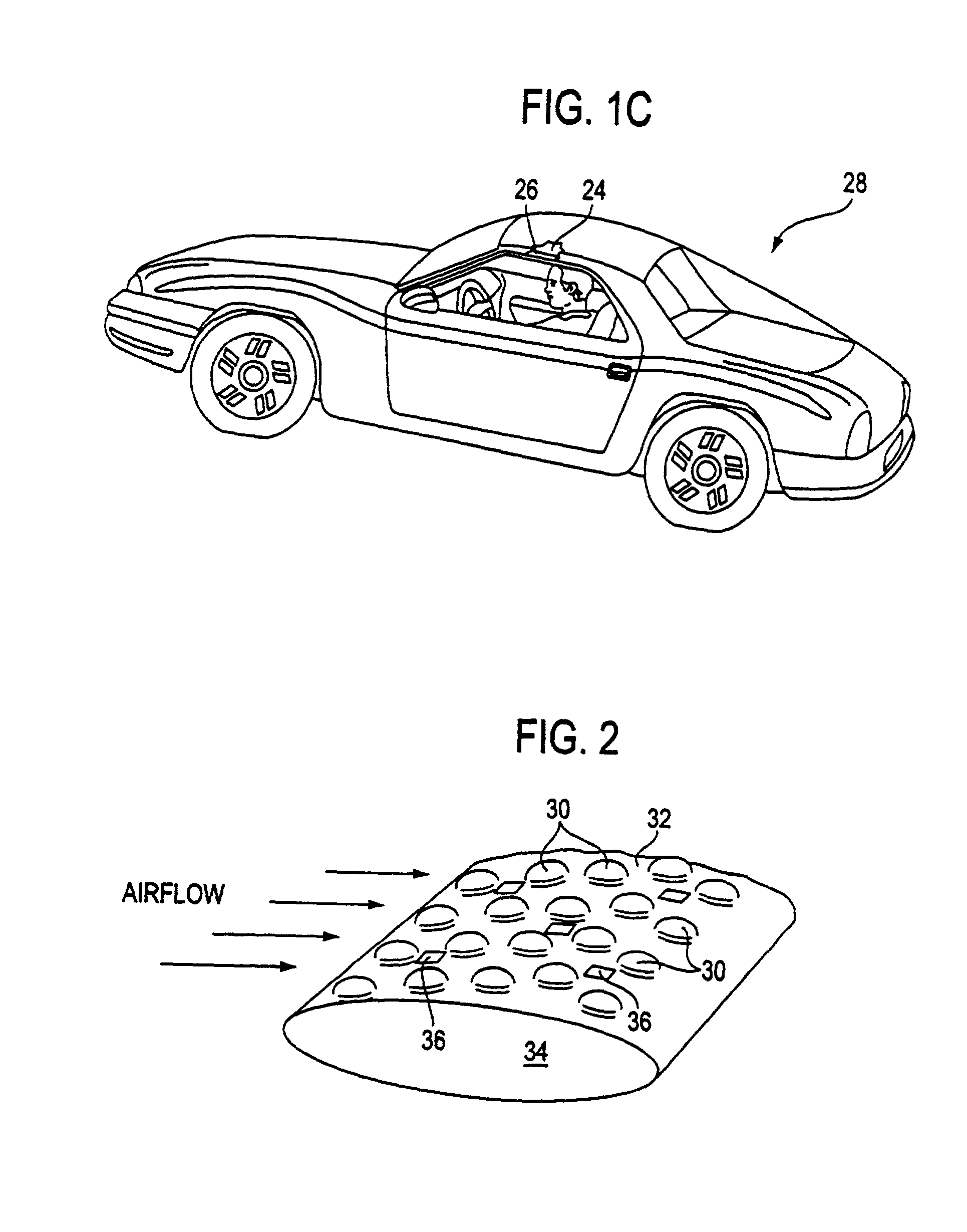Elastomeric dielectric polymer film sonic actuator
a dielectric polymer film and sonic actuator technology, applied in the field of acoustic actuators, can solve the problems of limiting the use of loudspeakers in automotive or aerospace applications, high weight of many such actuators, and low-profile, etc., and achieves simple and more versatile design, reduced operating voltage, and greater power output.
- Summary
- Abstract
- Description
- Claims
- Application Information
AI Technical Summary
Benefits of technology
Problems solved by technology
Method used
Image
Examples
Embodiment Construction
[0034]The invention is a loudspeaker or acoustic actuator that uses the electrostriction of elastomeric polymers in a novel configuration to produce extremely high acoustic output power in a lightweight, low-profile and simple-to-fabricate structure.
[0035]FIG. 1a illustrates a first application for the present invention. An acoustic actuator sheet 10 of electrostrictive polymer acoustic actuators is formed as a number of “tiles” or elements 12, each of which is provided with a microphone (not seen) facing a noise source. This produces a “quiet area” on the other side of the acoustic actuator sheet. The electronic circuitry for driving actuators in response to microphone inputs for noise cancellation purposes are well known to those skilled in the art. The acoustic actuator sheet can be supported by, for example, a frame, or it may be positioned within walls of a structure, such as within the walls of a building or airplane.
[0036]In FIG. 1b, a wall 14 of a room 16 is covered with an ...
PUM
 Login to View More
Login to View More Abstract
Description
Claims
Application Information
 Login to View More
Login to View More - R&D
- Intellectual Property
- Life Sciences
- Materials
- Tech Scout
- Unparalleled Data Quality
- Higher Quality Content
- 60% Fewer Hallucinations
Browse by: Latest US Patents, China's latest patents, Technical Efficacy Thesaurus, Application Domain, Technology Topic, Popular Technical Reports.
© 2025 PatSnap. All rights reserved.Legal|Privacy policy|Modern Slavery Act Transparency Statement|Sitemap|About US| Contact US: help@patsnap.com



